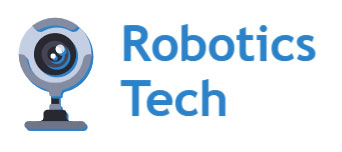In the dynamic world of social media, Instagram hashtags have become a powerful tool for increasing visibility and driving engagement. Implementing an effective hashtag strategy can significantly boost your content’s reach, connect you with your target audience, and ultimately enhance your overall Instagram presence. This comprehensive guide will explore various hashtag strategies and best practices to help you maximize your Instagram engagement.
Understanding Instagram Hashtags
Instagram hashtags are more than just trendy additions to your posts; they are fundamental elements that can make or break your content’s discoverability. Let’s delve into what hashtags are and why they’re crucial for your Instagram success.
What are Instagram Hashtags?
Hashtags are keywords or phrases preceded by the “#” symbol. They serve as metadata tags that categorize content and make it easier for users to discover posts related to specific topics. When you include a hashtag in your post, it becomes clickable and leads to a page showing all posts tagged with that particular hashtag. For example, #TravelPhotography would group all posts related to travel photography, making it easier for users interested in this topic to find relevant content.
Why Are Hashtags Important for Engagement?
The strategic use of hashtags can significantly impact your Instagram engagement. Here’s why they’re so important:
- Increased Visibility: Hashtags expose your content to a broader audience beyond your followers.
- Targeted Reach: They help you connect with users specifically interested in your niche or topic.
- Community Building: Hashtags create virtual communities around shared interests or events.
- Brand Recognition: Branded hashtags can boost brand awareness and encourage user-generated content.
- Trend Participation: They allow you to join conversations around trending topics or events.
By leveraging hashtags effectively, you can:
- Boost post impressions
- Increase follower count
- Improve engagement rates (likes, comments, shares)
- Enhance brand recognition
- Gather user-generated content
Types of Instagram Hashtags
To create a well-rounded hashtag strategy, it’s essential to understand and utilize different types of hashtags. Each type serves a unique purpose and can help you reach various segments of your target audience.
Popular Hashtags
Popular or trending hashtags are those used frequently across Instagram. They often relate to current events, holidays, or widely shared experiences.
Pros:
- Can drastically increase post visibility
- Potential to reach a large audience quickly
Cons:
- High competition makes it difficult to stand out
- May attract irrelevant followers or engagement
Examples of popular hashtags:
- #TBT (Throwback Thursday)
- #MondayMotivation
- #InstaGood
- #LikeForLike
Niche Hashtags
Niche hashtags are specific to particular industries, communities, or interests. They help you target a more defined audience who are likely to be genuinely interested in your content.
Benefits of niche hashtags:
- Attract highly targeted followers
- Less competition compared to popular hashtags
- Higher engagement rates from interested users
Examples of niche hashtags:
- #VeganBaking for vegan bakers
- #UrbanSketching for artists who sketch cityscapes
- #SustainableFashion for eco-friendly fashion enthusiasts
Branded Hashtags
Branded hashtags are unique to your business or campaign. They can be your company name, slogan, or a specific campaign tagline.
Purpose of branded hashtags:
- Increase brand awareness
- Encourage user-generated content
- Track campaign performance
Successful branded hashtag examples:
- #ShareACoke (Coca-Cola)
- #DoUsAFlavor (Lay’s)
- #WeAccept (Airbnb)
Best Practices for Using Hashtags
 To maximize the impact of your hashtag strategy, follow these best practices:
To maximize the impact of your hashtag strategy, follow these best practices:
Number of Hashtags to Use
While Instagram allows up to 30 hashtags per post, finding the right balance is crucial. Here’s a comparison of engagement rates based on the number of hashtags used:
| Number of Hashtags | Average Engagement Rate |
|---|---|
| 1-3 | 1.77% |
| 4-10 | 2.39% |
| 11-20 | 2.95% |
| 21-30 | 2.55% |
Based on this data, using between 11-20 hashtags appears to yield the highest engagement rates. However, it’s essential to test what works best for your specific audience and content.
Hashtag Placement
The placement of your hashtags can impact both aesthetics and engagement. Here are two common approaches:
- In the Caption:
- Pros:
- Immediately visible to users
- Can be integrated naturally into the text
- Cons:
- May look cluttered if using many hashtags
- Can distract from the main message
- Pros:
- In the First Comment:
- Pros:
- Keeps the caption clean and focused
- Still effective for discoverability
- Cons:
- May get buried under other comments
- Slight delay in hashtag activation
- Pros:
Researching Effective Hashtags
Choosing the right hashtags is crucial for maximizing your Instagram engagement. Here are some tips and techniques to help you research and select the most effective hashtags for your content:
- Use Instagram’s search function: Start typing a relevant keyword in Instagram’s search bar and observe the autocomplete suggestions. These often represent popular related hashtags.
- Analyze competitor hashtags: Study the hashtags used by successful competitors in your niche. This can provide valuable insights into what’s working within your industry.
- Explore related hashtags: When you search for a hashtag on Instagram, you’ll see a list of related tags. Investigate these for additional ideas and to expand your hashtag repertoire.
- Monitor industry influencers: Follow influential accounts in your niche and take note of the hashtags they consistently use. These can often be good indicators of effective tags in your field.
- Utilize hashtag research tools: Several tools can assist you in finding and analyzing hashtags:
- Hashtagify: Offers detailed analytics on hashtag performance
- RiteTag: Suggests hashtags based on real-time engagement data
- Display Purposes: Generates relevant hashtags based on your input
- Track trending hashtags: Use tools like Trendsmap or Instagram’s Explore page to discover trending hashtags that might be relevant to your content.
- Leverage AI-powered tools: AI can be incredibly helpful in generating relevant hashtags and captions. You can experiment with this tool to create engaging captions with appropriate hashtags.
- Conduct keyword research: Employ SEO tools to find keywords related to your content, then transform these into hashtags.
- Create a branded hashtag: Develop a unique hashtag for your brand or campaign. This helps in tracking engagement and encouraging user-generated content.
- Incorporate location-based hashtags: If your content is location-specific, include relevant geographic hashtags to reach local audiences.
- Use a mix of popular and niche hashtags: Combine widely-used hashtags with more specific, niche ones to balance reach and targeting.
- Check hashtag volume: Look at the number of posts associated with each hashtag. Aim for a mix of high-volume (100k-500k posts) and medium-volume (10k-100k posts) hashtags.
- Analyze hashtag relevance: Ensure the hashtags you choose are truly relevant to your content. Irrelevant hashtags can hurt your engagement and credibility.
- Create a hashtag database: Keep a running list of effective hashtags for different types of content you post regularly.
- Test and iterate: Regularly review the performance of your hashtags using Instagram Insights. Experiment with different combinations and adjust your strategy based on what drives the most engagement.
Remember, the key to an effective hashtag strategy is relevance and balance. Use a combination of broad and specific hashtags, and always ensure they accurately represent your content and target audience. Regularly updating your hashtag strategy based on performance data will help you maintain and improve your Instagram engagement over time.
Common Mistakes to Avoid
 To ensure your hashtag strategy enhances rather than hinders your engagement, avoid these common pitfalls:
To ensure your hashtag strategy enhances rather than hinders your engagement, avoid these common pitfalls:
Overusing Hashtags
While it’s tempting to use all 30 available hashtags, this can often backfire:
- It can make your content look spammy
- It may dilute your message
- Instagram’s algorithm might flag it as low-quality content
Solution: Focus on quality over quantity. Use a carefully curated selection of relevant hashtags instead of maxing out the limit.
Using Irrelevant Hashtags
Adding popular but irrelevant hashtags to your posts can:
- Confuse Instagram’s algorithm
- Attract the wrong audience
- Decrease engagement from your target followers
Solution: Always prioritize relevance over popularity. Choose hashtags that accurately describe your content and appeal to your intended audience.
Monitoring and Adjusting Your Hashtag Strategy
A successful hashtag strategy requires ongoing monitoring and adjustment. Here’s how to keep your approach effective:
Analyzing Hashtag Performance
Regularly review the performance of your hashtags using Instagram Insights or third-party analytics tools. Key metrics to watch include:
- Reach
- Impressions
- Engagement rate
- Follower growth
- Click-through rate (for stories and bio links)
Use this data to identify which hashtags are driving the most engagement and adjust your strategy accordingly.
Adapting to Trends
Stay agile and ready to adapt your hashtag strategy to emerging trends:
- Keep an eye on trending hashtags in your niche
- Participate in relevant viral challenges or movements
- Create content around seasonal or event-specific hashtags
- Monitor industry influencers for new hashtag ideas
Example: During the COVID-19 pandemic, many brands successfully adapted their strategies to include hashtags like #StayHome and #SocialDistancing, aligning their content with current global concerns. By implementing these effective hashtag strategies, you can significantly increase your Instagram engagement, reach a wider audience, and build a stronger community around your brand or content. Remember to consistently test, analyze, and refine your approach to ensure ongoing success in the ever-evolving landscape of Instagram marketing.




